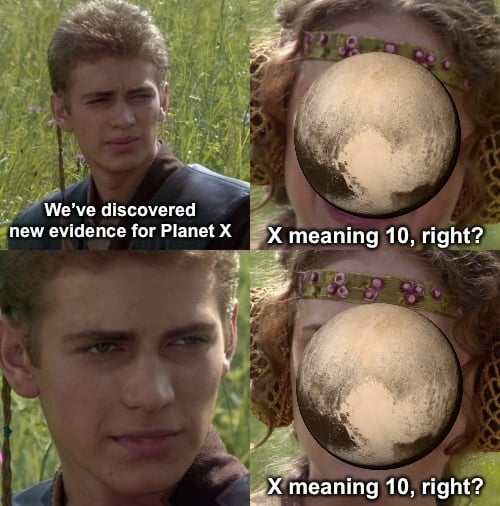this post was submitted on 26 Apr 2024
509 points (96.5% liked)
Science Memes
11253 readers
3081 users here now
Welcome to c/science_memes @ Mander.xyz!
A place for majestic STEMLORD peacocking, as well as memes about the realities of working in a lab.

Rules
- Don't throw mud. Behave like an intellectual and remember the human.
- Keep it rooted (on topic).
- No spam.
- Infographics welcome, get schooled.
This is a science community. We use the Dawkins definition of meme.
Research Committee
Other Mander Communities
Science and Research
Biology and Life Sciences
- [email protected]
- [email protected]
- [email protected]
- [email protected]
- [email protected]
- [email protected]
- [email protected]
- [email protected]
- [email protected]
- [email protected]
- [email protected]
- [email protected]
- [email protected]
- [email protected]
- [email protected]
- [email protected]
- [email protected]
- [email protected]
- [email protected]
- [email protected]
- [email protected]
- [email protected]
- [email protected]
- [email protected]
- !reptiles and [email protected]
Physical Sciences
- [email protected]
- [email protected]
- [email protected]
- [email protected]
- [email protected]
- [email protected]
- [email protected]
- [email protected]
- [email protected]
Humanities and Social Sciences
Practical and Applied Sciences
- !exercise-and [email protected]
- [email protected]
- !self [email protected]
- [email protected]
- [email protected]
- [email protected]
Memes
Miscellaneous
founded 2 years ago
MODERATORS
you are viewing a single comment's thread
view the rest of the comments
view the rest of the comments

this method is how we discovered Neptune and Pluto and many exoplanets. Kepler's laws are extremely specific about orbits, so once you pin down the disturbances the planet makes you significantly narrow down the places it can be.
Yes, but that new evidence is way less distinguishable from noise than the one for Neptune.
At this point, the most likely is that there isn't anything there.
Can we just send someone to check it out? Stop being lazy.
I have a pizza for I. C. Weiner
Yes, the difference being that the existence of Neptune and Pluto could be visually confirmed through telescope more easily. They're also not visible to the naked eye, but they can be found in telescopic images by comparing to a map of the sky at other times. Later on they were visited by probes.
I don't know what counts as a discovery of a planet. Personally, I'd like to see any kind of real data from the planet before claiming it discovered.
The calculations can be 100% correct, but they're not verified until there's some kind of external proof.
The planet X (or 9 or whatever) has yet to be seen in any kind of way.
So far the calculations have been confirmed by other calculations showing the same thing, and they're most certainly correct, but the "solid" proof is still missing.
(It doesn't have to be solid or visual, I don't know the English word for it; it just needs to originate from the actual existence of the planet and not only from the effects of its theoretical existence.)